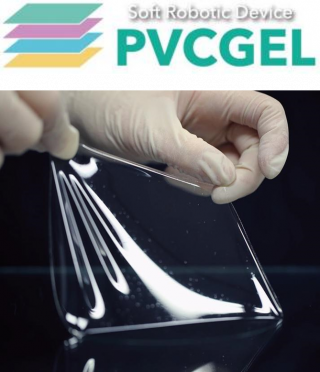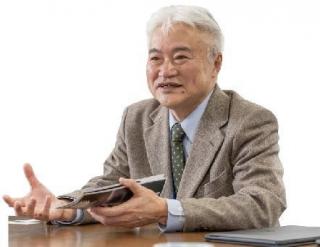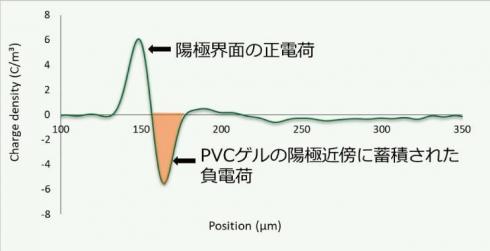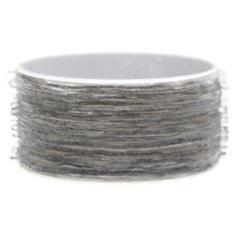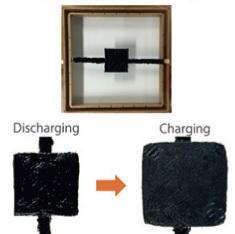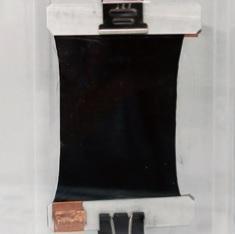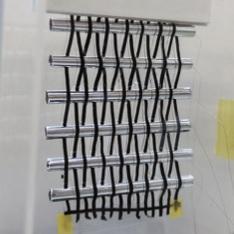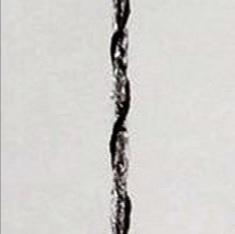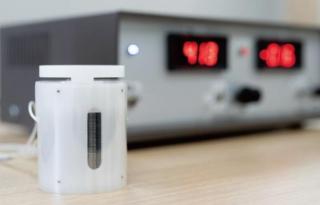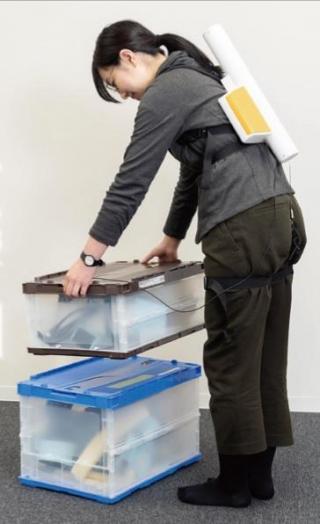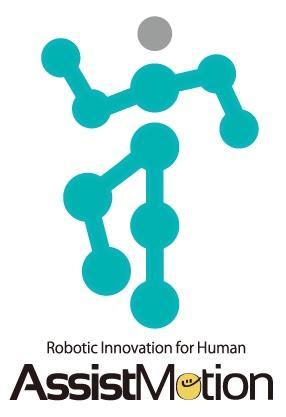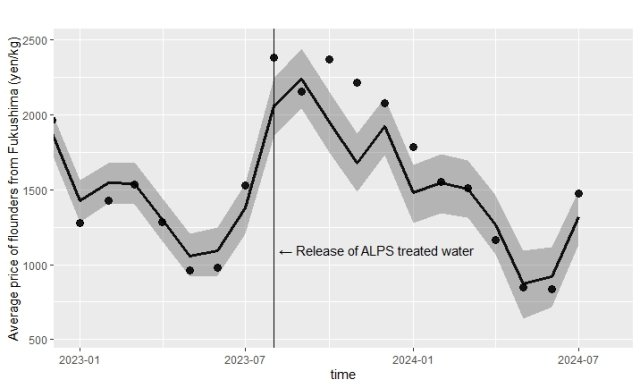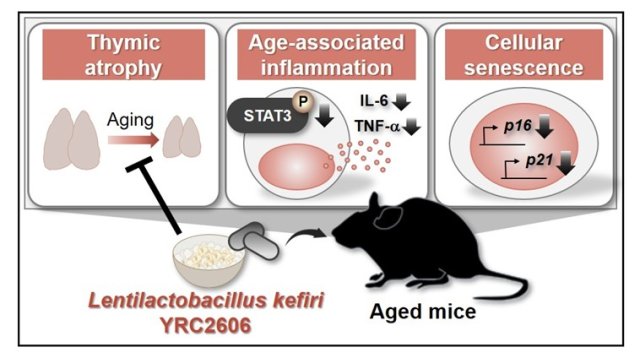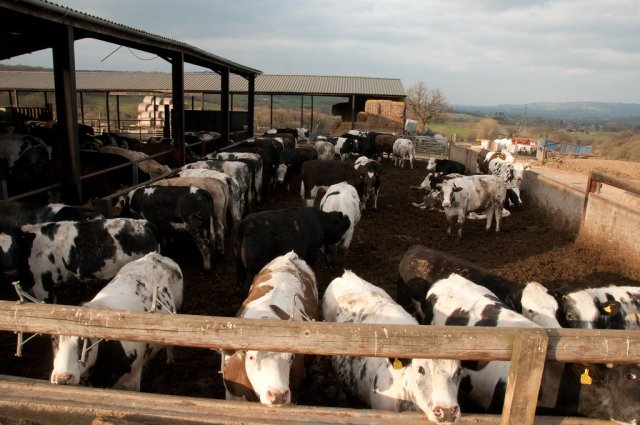【Research Highlight】Artificial muscles that are quiet, soft, lightweight and energy-saving
- Share
- Tweet
- Send to email
Wearable robots and actuators are in demand in the fields of medicine and nursing care with a rapidly declining birthrate and aging population.
The Hashimoto Laboratory in the Faculty of Textile Science has been conducting research and development * 1 focusing on "PVC gel artificial muscle" which is a polymer material that is soft, lightweight, quiet, and demonstrates stable stretch motion in the air. An actuator that uses the deforming property of PVC gel artificial muscle has properties similar to that of real muscles, and is said to be a promising next-generation actuator for artificial muscles.
We visited the Hashimoto Laboratory that is developing the versatile application of PVC gels and the development of waist support wear “heige".
* 1 New Energy and Industrial Technology Development Organization (NEDO) 2015 project "Research and development of soft actuator for wearable robot using plasticized PVC gel" (consignee) Shinshu University / National Institute of Advanced Industrial Science and Technology.
(Text by Ayu Yanagisawa)
... From Shinshu University's public relations magazine "Shindai NOW" No. 121 (January 31, 2020)
PVC (polyvinyl chloride) gel is an artificial muscle similar to real-life muscles
Since polymer materials are flexible, lightweight, and have excellent workability, they have attracted attention as next-generation actuators and have been under research and development for many years.
A wide variety of polymer actuators have been developed, but the PVC gel actuator is currently the closest to having the characteristics of living muscles. Taking advantage of the characteristics of the PVC gel actuator (light weight, quiet, and high output) has unlocked the unlimited possibility to expand its potential use anywhere.
What is PVC gel?
PVC gel is a polymer gel composed of polyvinyl chloride (PolyVinyl Chloride) and plasticizer known for its high strength and weather resistance. It is inexpensive, flexible, lightweight, and has good workability, so it has excellent properties as a material for artificial muscles.
Deformation mechanism that creates the basic structure and unique behavior of PVC gel
When a voltage is applied to the element sandwiching the PVC gel sheet between the electrodes, the electric charge inside the PVC gel moves and accumulates near the anode. This creates the unique property of creep deformation along the anode.
It is considered that a high density area of negative charge appears near the anode when a voltage is applied and the gel near the anode deforms due to electrostatic attraction with the anode.
Meet PVC gel as a robot actuator
Professor Hashimoto has been working on robot actuators since the 1980s. At that time, they were considering its use for shape memory alloys because the material expands and contracts by heating and cooling. However because it takes too much time to cool down, they had given up on that application because it would need to respond a lot sooner. “I think I was interested in PVC gels around 2008, because Professor Toshihiro Hirai (now Specially Appointed Professor) of the Faculty of Textiles was watching a video that makes a funny movement when high voltage is applied. That’s when I also started research on this material ” (Professor Hashimoto).
Infinite possibilities of PVC gels
The PVC gel, which is characterized by its softness, light weight, quietness, and low power consumption, has widespread potential for commercialization depending on its application. For example, negative-acting brakes, massagers for lymphedema care, breathing devices, walking assist wear, tactile displays et cetera.
With the development of actuators that are more like fibers (see the figure on the lower left for various shapes), there are unlimited possibilities such as work clothes that have an assist function built-in and services that give the assist function to clothes.
“I believe that practical assist function in clothes can bring smiles to the face of many.” (Professor Hashimoto)
Development and trial production of waist support wear heige
Waist support wear is a representative product of the R&D of wearable robot technology that uses PVC gel actuators that is gentle on people.
It reduces the strain on the wearer's lower back by exerting power when they need support in a variety of work situations, such as medical sites, nursing care sites, agricultural work, construction, and transportation. When a voltage is applied or removed, the actuator installed on the back expands and contracts to support the muscle strength of the erector spinae muscles.
"We called the waist support wear heige a “wearing robot” because it has the same concept as the robotic wear curara®” said Professor Hashimoto with a laugh. The difference is a motor and an actuator with PVC. As you can see in the photo, the knee joint and abdomen are free, and the easy attachment / detachment features a user-friendly design. A laminated actuator that has stable and large expansion and contraction characteristics is being developed. A laminated actuator is contained in a tubular unit that is carried on the back. (I tried it on, and was surprised by its lightness.)
"At present, there are two issues: mass production of PVC gel and to lower the voltage. Currently, production is done manually and it is necessary to bring down the voltage to less than 100V for home use and safety reasons..." (Professor Hashimoto).
Although there are still many issues to be solved, it is essential to develop wearable robots that take into consideration human affinity and safety with the need for various medical and welfare equipment in an aging society. I could imagine a bright future where advanced research conducted by universities will take the lead in implementing products made through R&D and contribute to society.


